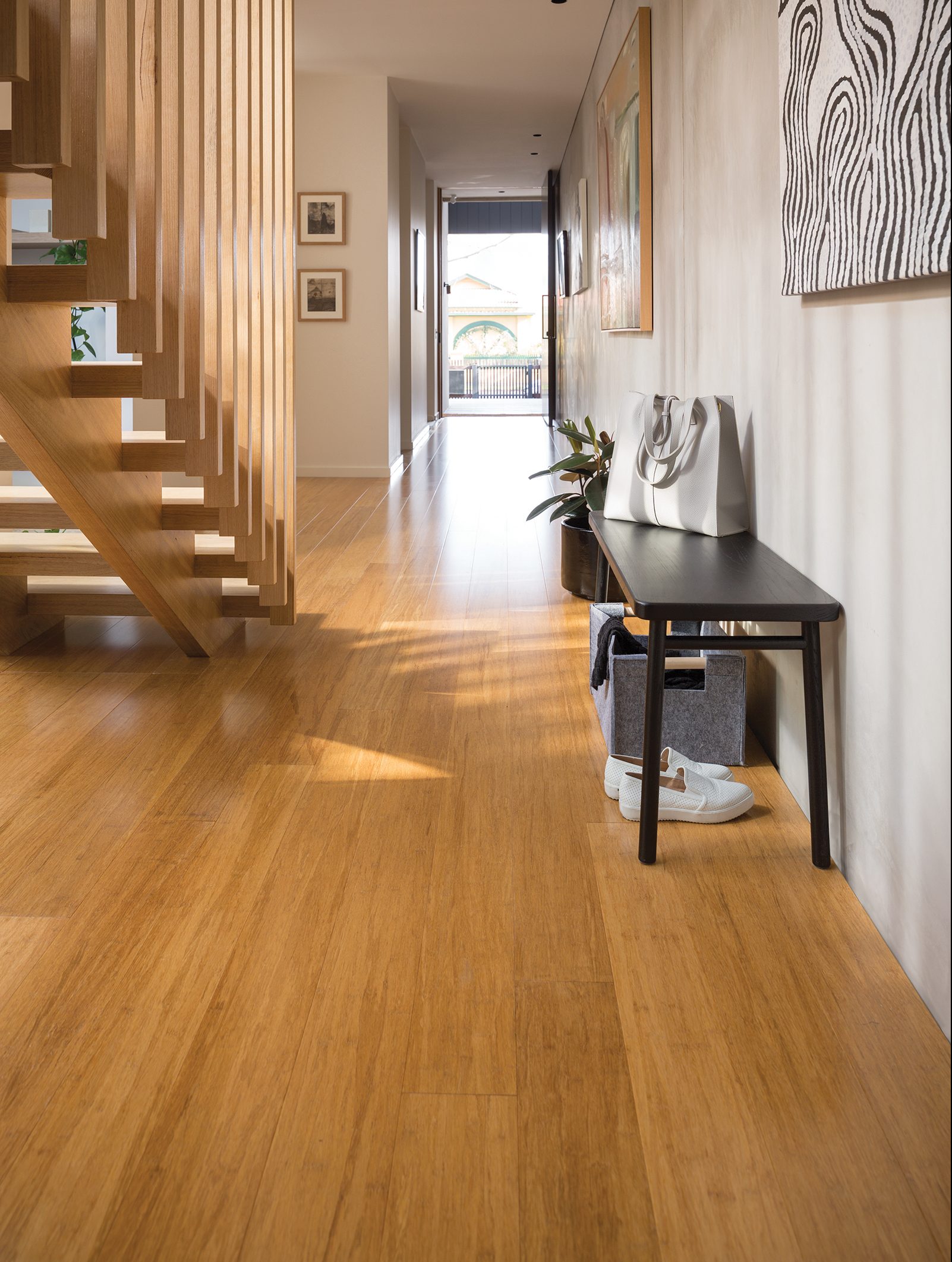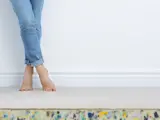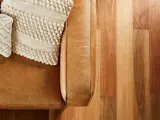It’s beautiful to look at, tactile underfoot, sustainably responsible and cheaper than hardwood. Interior designer and author, Tahn Scoon shares her thoughts on why you should consider bamboo…
From a design point of view:
Like timber, bamboo is a hard flooring that has the benefit of being warm and tactile underfoot. Whilst natural bamboo is a lovely golden colour, it can be stained almost any colour and comes in a wide variety of hues. The natural finish of the product particularly suits homes that delight in other natural finishes such as stone, linen, wicker and timber.
I recently used bamboo in a client’s contemporary beach home, the floors really sat well in their enviable beach side location but they sit well in almost any contemporary home. You do have to be a little more careful in very traditional homes though, you’ll need a stain and grain that really mimics timber.
The other plus from a design point of view is that bamboo is extremely weather resistant. It doesn’t swell in the humidity or contract in more arid conditions (both important points in many parts of Australia). And…it’s naturally resistant to many pests, including the dreaded termite!
Care and maintenance:
Caring for bamboo is similar to caring for timber floors. Sweep and vacuum regularly and tend to liquid spills as soon as possible. Use a dry cloth or paper towel to soak up the majority of the spill, then wipe over with a slightly damp cloth. Bamboo floors can be mopped but ensure the mop is damp not wet.
Bamboo will scratch much in the same way as timber, so avoid dirt and small stones being brought into the house by placing door mats at the entrance of your home – and slip soft felt pads under heavy furniture.
The green aspect:
When you consider it takes 20 to 120 years for hardwood to mature enough to harvest and between 5 to 7 for bamboo, it’s easy to see why bamboo is many times more environmental. It grows rapidly in the wild without the need of harsh fertilisers or other chemicals.
To ensure the bamboo you buy is responsibly harvested, check it is FSC certified. And whilst bamboo doesn’t require harsh chemicals to grow, ensure they haven’t been added to the production process by sourcing low VOC planks.
P.S. For the animal lovers out there, please note bamboo flooring is almost always made from the Moso species of bamboo, which is thankfully unpalatable to pandas.
Recent Posts
Benefits of Hard flooring Underlay
The underlay you choose can make a significant imp...
Benefits of Carpet Underlay
Investing in high-quality carpet underlay can impr...
The Ultimate Guide To Choosing The Right Flooring Underlay For Your Home
In the world of home decor, where plush carpets an...
From Comfort to Style: How the Perfect Floor Can Transform Your Room
Floors are not just surfaces - they are design sta...
Timeless Timber Flooring Trends
Winter is a season of cozy nights, warm beverages ...
Hard Flooring | Hardwood Floors | Choices Flooring
Looking for hardwood flooring? We stock a large ra...







